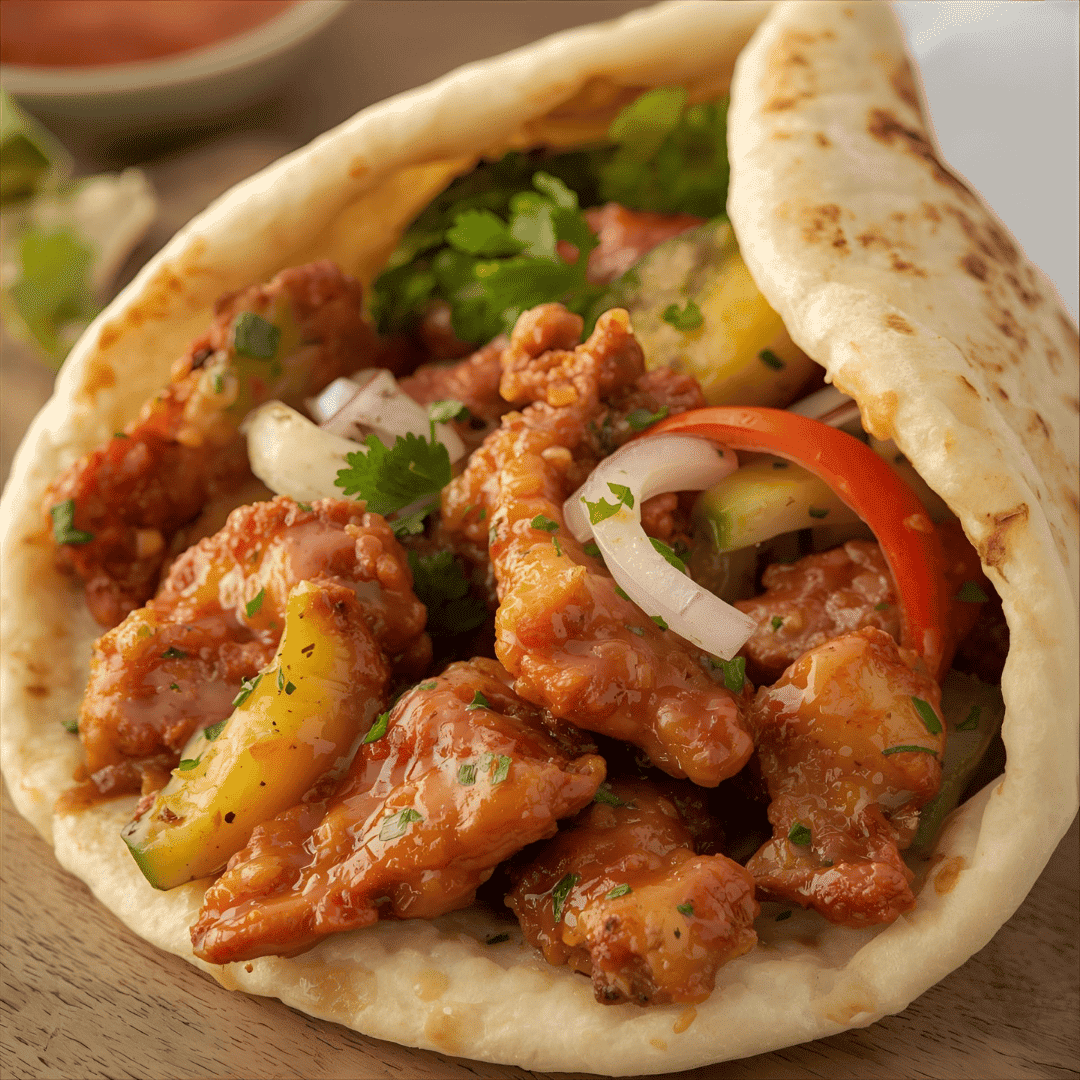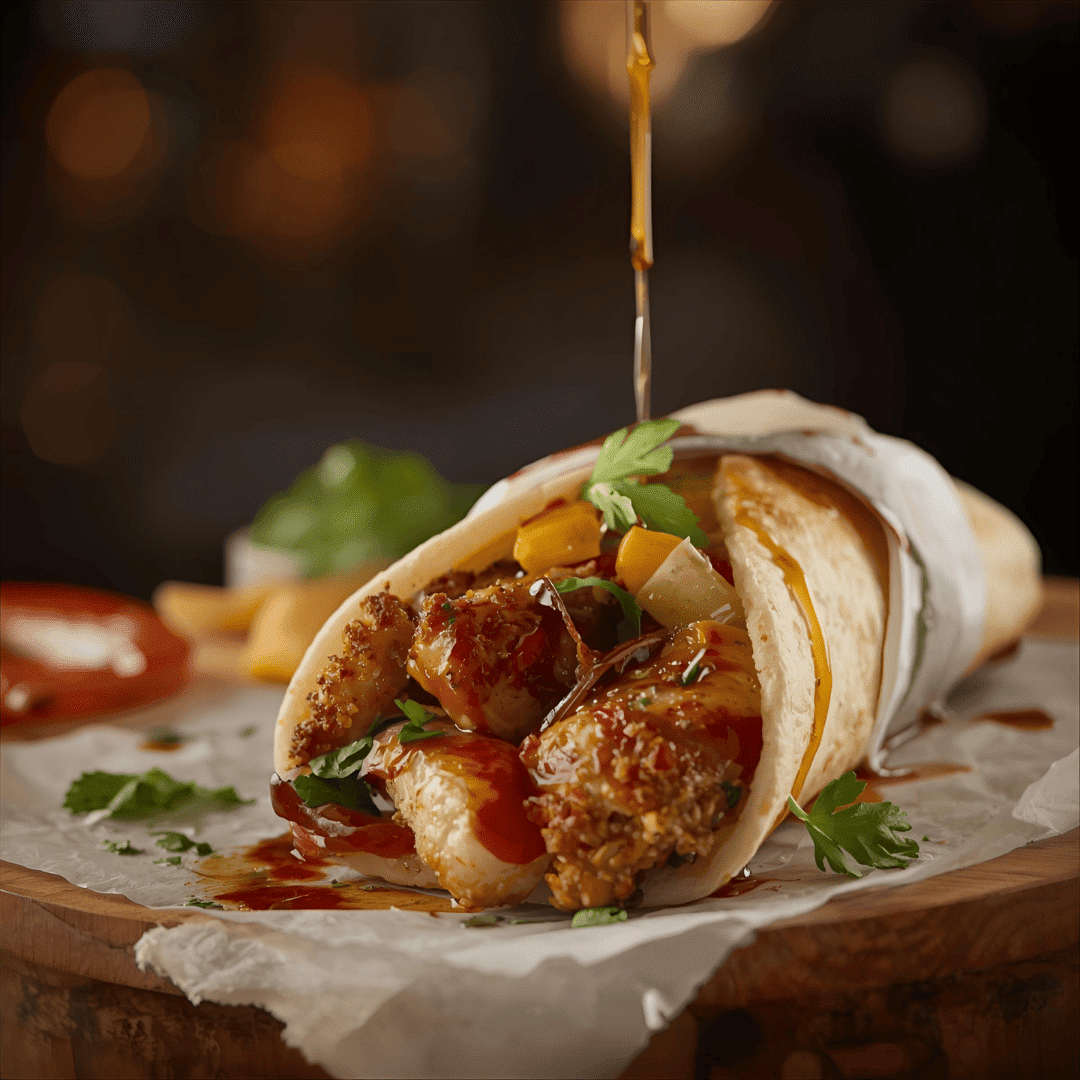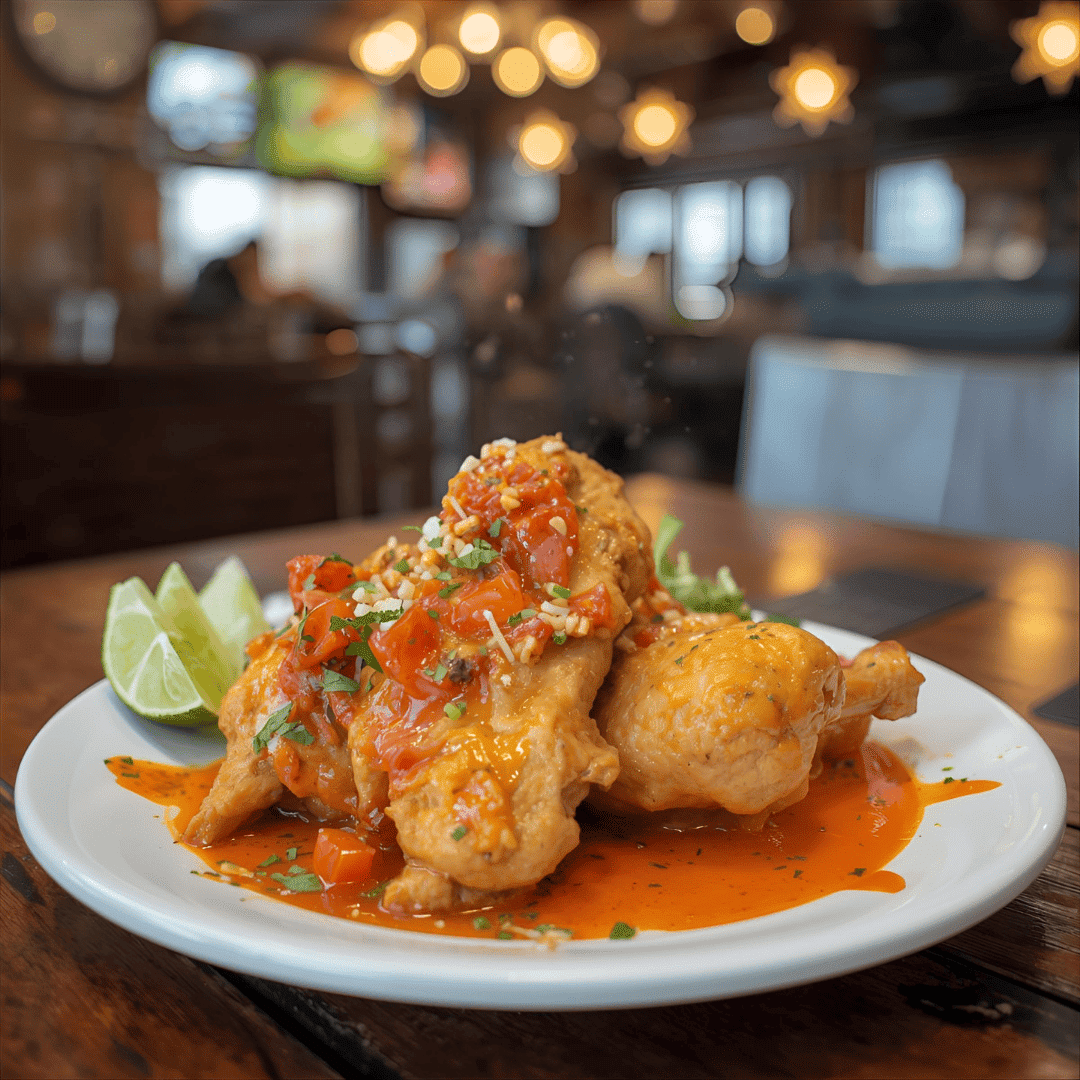Table of Contents
- A Culinary Introduction: More Than Just a Meal
- The Rich History Behind the Beloved Doner Kebab
- From Ottoman Roots to a Global Sensation
- How Chicken Doner Carved Its Niche
- What Truly Defines an Authentic Chicken Doner?
- The Art of the Marinade: The Soul of the Dish
- Stacking the Spit: A Skill Honed Through Experience
- The Vertical Rotisserie: The Secret to Succulent Meat
- Deconstructing the Perfect Chicken Doner Marinade
- Essential Spices That Define Authentic Chicken Doner
- The Critical Role of Yogurt and Lemon Juice
- A Practical Tip: Marination Time for Maximum Flavor
- From My Experience: 3 Common Mistakes to Avoid
- Mistake #1: Using the Wrong Cut of Chicken
- Mistake #2: Imbalanced Marination
- Mistake #3: Incorrect Cooking and Carving
- The Nutritional Profile of a Typical Chicken Doner
- Is Chicken Doner a Healthier Fast-Food Alternative?
- Understanding the Calorie and Macronutrient Breakdown
- How to Spot a High-Quality Chicken Doner in Canada
- Visual Clues of Freshness and Quality
- Why a Professional Setup Matters
- The Science of Cooking a Perfect Chicken Doner
- Maillard Reaction: Creating That Irresistible Crust
- The Physics of Heat Transfer in a Vertical Rotisserie
- Frequently Asked Questions (FAQs) About Chicken Doner
- Conclusion: Your Journey to Perfect Chicken Doner Starts Here
A Culinary Introduction: More Than Just a Meal
There are few culinary experiences as universally satisfying as witnessing perfectly seasoned meat being expertly carved from a rotating vertical spit. The aroma alone is enough to transport you to the bustling streets of Istanbul. For many Canadians, the quest for the perfect chicken doner has become a passionate pursuit. It’s not just fast food; it’s a craft. As a chef with over 15 years of hands-on experience in perfecting Turkish cuisine, I’ve dedicated my career to understanding every nuance of this iconic dish. This guide is born from that experience—countless hours spent refining marinades, mastering the art of stacking the spit, and understanding the science behind that perfect, succulent slice. We will go beyond a simple recipe to explore the history, technique, and soul of what makes an authentic chicken doner a truly unforgettable meal.
The Rich History Behind the Beloved Doner Kebab
To truly appreciate the modern chicken doner, we must first look back to its origins. Understanding its history not only provides context but also establishes the foundation of its culinary authority.
From Ottoman Roots to a Global Sensation
The doner kebab, which translates to “rotating roast,” has its roots in the 19th-century Ottoman Empire. While rotating meat horizontally had been a practice for centuries, the innovation of stacking meat on a vertical spit is widely credited to Iskender Efendi of Bursa, Turkey, around 1870. This vertical orientation was a game-changer; it allowed the fat and juices to trickle down, continuously basting the meat as it cooked. This method ensured that every slice was tender, flavorful, and perfectly cooked. Initially made with lamb, this culinary invention quickly spread throughout the region and, eventually, the world.
How Chicken Doner Carved Its Niche
As the doner kebab traveled globally, it adapted to local tastes and ingredient availability. The chicken doner emerged as a popular and lighter alternative to the traditional lamb. It presented a new challenge for chefs: chicken, being much leaner than lamb, requires a more precise marination process to prevent it from drying out during the slow-roasting process. Consequently, the development of the chicken doner was an exercise in expertise, forcing chefs to refine their techniques. Today, especially in Western countries like Canada, chicken doner stands as a co-equal, celebrated for its unique flavor profile and perceived health benefits.
What Truly Defines an Authentic Chicken Doner?
Not all rotating chicken spits can be called a true chicken doner. Authenticity lies in a trifecta of elements: the marinade, the stacking technique, and the cooking method. From my professional experience, compromising on any one of these pillars results in a subpar product.
The Art of the Marinade: The Soul of the Dish
The marinade is where the magic begins. It’s not simply about adding flavor; its primary purpose is to tenderize the chicken meat, ensuring it remains juicy and succulent even after hours of slow roasting. An authentic marinade is a carefully balanced blend of acidic components like yogurt and lemon juice, savory spices, and rich fats like olive oil. This is where a chef’s expertise truly shines. The balance has to be perfect, as an overly acidic marinade can “cook” the meat chemically, resulting in a mushy texture.
Stacking the Spit: A Skill Honed Through Experience
A common mistake I’ve seen in less experienced kitchens is the haphazard stacking of the meat. The process of building the doner spit, or şiş, is a meticulous craft. It involves layering thinly sliced, marinated chicken thighs—never breast, as it lacks the necessary fat—in a compact, conical shape. Each layer must be pressed firmly against the last to eliminate air pockets, which can cause uneven cooking. A well-stacked spit ensures that heat distributes evenly and that the structure holds together as slices are carved away. This is a manual skill that takes years to master and is a clear sign of an authoritative kitchen.
The Vertical Rotisserie: The Secret to Succulent Meat
The vertical rotisserie is the cornerstone of doner production. As mentioned, this method allows the meat’s own juices and the rendered fat to continuously baste the cone of meat below it. This self-basting mechanism is what creates the signature tender interior and crispy, caramelized exterior. The heat source, whether gas or electric, is positioned to cook the outer layer perfectly, allowing for thin, delicate slices to be shaved off for serving while the rest of the cone continues to cook.
Deconstructing the Perfect Chicken Doner Marinade
Let’s delve deeper into the heart of the flavor—the marinade. This is where expertise in food chemistry and flavor pairing becomes paramount.
Essential Spices That Define Authentic Chicken Doner
While recipes vary, a core group of spices is non-negotiable for an authentic chicken doner. These typically include:
- Paprika (often a mix of sweet and smoked): For color and a mild, smoky sweetness.
- Cumin: Provides a warm, earthy, and slightly pungent note.
- Coriander: Adds a bright, citrusy, and floral element.
- Black Pepper: For a touch of heat and pungency.
- Oregano: Lends a classic Mediterranean, peppery flavor.
- Garlic and Onion Powder: These form the aromatic base, providing deep, savory undertones.
The secret lies not just in the ingredients but in their proportions, which is often a closely guarded recipe at established Turkish restaurants.
The Critical Role of Yogurt and Lemon Juice
The use of yogurt is a hallmark of an expert marinade. The lactic acid in yogurt gently breaks down the muscle fibers in the chicken, a process known as enzymatic tenderization. This makes the meat incredibly tender without turning it to mush. Lemon juice provides a similar acidic effect but also adds a crucial brightness that cuts through the richness of the spices and fat. From a food science perspective, this acidic environment also helps to inhibit the growth of bacteria during the lengthy marination period.
A Practical Tip: Marination Time for Maximum Flavor
A common question I receive is about the ideal marination time. From my experience, for a chicken doner, the sweet spot is between 12 and 24 hours. Less than 12 hours, and the flavors won’t penetrate deeply enough. More than 24 hours, and the acidity can begin to break down the meat’s texture too much, leading to a grainy final product. This is a practical tip that separates the amateurs from the experts.
From My Experience: 3 Common Mistakes to Avoid
Over the years, I’ve seen many attempts to replicate the authentic chicken doner, and I’ve identified a few recurring errors. Avoiding these is key to achieving a trustworthy and high-quality result.
Mistake #1: Using the Wrong Cut of Chicken
This is the most frequent and fatal error. Many try to use chicken breast because it’s perceived as healthier or easier to handle. However, chicken breast lacks the necessary intramuscular fat. On a vertical spit, it dries out almost instantly, resulting in a chalky, flavorless product. Boneless, skinless chicken thighs are the only acceptable cut. Their higher fat content renders during cooking, basting the meat and ensuring every slice is moist and flavorful.
Mistake #2: Imbalanced Marination
As discussed, the marinade is a delicate balance. A common mistake is using too much acid (lemon juice, vinegar) in an attempt to tenderize the meat quickly. This “cooks” the chicken chemically (like in ceviche) and ruins the texture. Another error is not using enough fat (like olive oil or full-fat yogurt), which is essential for carrying fat-soluble flavors and protecting the meat from the intense heat.
Mistake #3: Incorrect Cooking and Carving
Operating a vertical broiler requires expertise. The heat must be calibrated so that the outer layer is perfectly caramelized but not burnt, while the inside remains uncooked until its turn. Carving is equally important. Slices must be shaved thinly with a specialized long knife or electric carver. Thick, chunky slices are a sign of an inexperienced operator and lead to a less pleasant eating experience.
The Nutritional Profile of a Typical Chicken Doner
In an era of health consciousness, it’s important to provide trustworthy information about what we eat. The nutritional value of a chicken doner can vary widely based on preparation and portion size.
Is Chicken Doner a Healthier Fast-Food Alternative?
Compared to many deep-fried fast-food options, a chicken doner can be a more balanced choice. Because the meat is roasted, not fried, it typically contains less unhealthy fat. It’s a significant source of protein, which is essential for muscle repair and satiety. However, the final healthiness depends on the accompaniments. A doner wrapped in a fresh pita with plenty of salad is a relatively balanced meal. One loaded with high-calorie sauces and served with a large side of fries is, naturally, less so.
Understanding the Calorie and Macronutrient Breakdown
Providing exact numbers is difficult, but we can offer a general, authoritative estimate. According to data from various nutritional databases, a standard chicken doner wrap (around 350g) typically contains:
- Calories: 600-800 kcal
- Protein: 40-50g
- Fat: 25-35g
- Carbohydrates: 40-55g
For more detailed nutritional information, consumers can refer to resources like the Canadian Nutrient File, a comprehensive database managed by Health Canada. This transparency is crucial for building trust with customers.
How to Spot a High-Quality Chicken Doner in Canada
When you’re looking for an authentic chicken doner experience, there are several visual cues that signal quality and expertise.
Visual Clues of Freshness and Quality
- The Spit: Look for a spit that is hand-stacked with visible layers of whole chicken thigh meat, not a perfectly uniform, pre-formed loaf. A pre-formed cone is often a sign of a mass-produced product containing fillers and binders.
- The Color and Texture: The outer layer should have a deep, caramelized brown crust, but it shouldn’t look dry or burnt. As it’s carved, you should see juicy, succulent meat underneath.
- The Carving: Watch the operator. They should be carving thin, consistent slices to order. A large pile of pre-carved meat sitting in a warmer is a red flag for dryness.
Why a Professional Setup Matters
A clean, well-maintained kitchen and service area are non-negotiable. Trustworthiness is built on more than just taste; it’s about food safety and professionalism. A dedicated vertical broiler, proper food handling procedures, and a clean environment are all indicators of a restaurant that respects the craft and its customers.
The Science of Cooking a Perfect Chicken Doner
To truly showcase expertise, it’s beneficial to understand the scientific principles at play. The incredible flavor and texture of a chicken doner are not accidental; they are the result of specific chemical and physical reactions.
Maillard Reaction: Creating That Irresistible Crust
That savory, complex, and deeply browned crust on a perfectly cooked chicken doner is a direct result of the Maillard reaction. This is a chemical reaction between amino acids and reducing sugars that occurs when meat is heated above 140°C (285°F). As explained by food science experts at publications like Serious Eats, this reaction creates hundreds of new aroma and flavor compounds that are responsible for the characteristic “roasty” flavor we crave. The slow, dry heat of the vertical broiler is the perfect environment to initiate and sustain this reaction on the meat’s surface.
The Physics of Heat Transfer in a Vertical Rotisserie
The vertical spit is a brilliant piece of engineering that leverages multiple forms of heat transfer.
- Radiant Heat: The primary cooking is done by infrared radiation from the heating elements. This cooks the surface of the meat directly.
- Conduction: As the outer layers cook, heat is conducted inward toward the center of the meat cone.
- Convection: The rotating motion of the spit ensures that all sides are exposed to the radiant heat source evenly, preventing one side from burning while the other remains raw. This combination ensures a continuous cooking process that is both efficient and effective.
Frequently Asked Questions (FAQs) About Chicken Doner
Here are expert answers to some of the most common questions I’ve encountered about chicken doner.
1. What is the main difference between chicken doner and shawarma? While both involve vertically roasted meat, their origins and flavor profiles are distinct. Doner is Turkish, and its marinade is typically yogurt-based with spices like paprika and oregano. Shawarma is of Levantine Arab origin, and its marinade often features a different spice blend, including cardamom, allspice, and turmeric, and frequently uses a tahini-based sauce.
2. Is chicken doner healthy? It can be a relatively healthy option. Chicken is a lean protein, and the roasting method is healthier than deep-frying. To maximize health benefits, opt for a doner plate with salad or a wrap with plenty of fresh vegetables and minimal creamy sauces.
3. What is traditionally served with chicken doner? In Turkey, it’s often served as “pide” (on a flatbread), “dürüm” (in a thin lavash wrap), or “pilav üstü” (over rice pilaf). Common accompaniments include sliced tomatoes, onions with sumac, pickled peppers, and a yogurt-based sauce.
4. Can I make chicken doner without a vertical spit? While you can’t perfectly replicate the self-basting effect, you can create a “doner-style” chicken at home. My professional tip is to marinate chicken thighs, stack them tightly on skewers, and roast them in a very hot oven or on a grill, turning frequently and slicing the cooked outer layers off as you go.
5. How is chicken doner meat stacked? Expertly stacking a doner spit involves layering marinated boneless, skinless chicken thighs one by one onto a long vertical skewer. Each layer is pressed down firmly to create a dense, compact cone. Sometimes, a layer of fat (like lamb tail fat) is added to the top to further enhance the basting process as it melts and drips down.
Conclusion: Your Journey to Perfect Chicken Doner Starts Here
We have journeyed from the 19th-century Ottoman Empire to the modern Canadian food scene, deconstructing every element that contributes to a world-class chicken doner. We’ve established that authenticity is not a single ingredient but a commitment to a process: a balanced, tenderizing marinade; the meticulous, hands-on craft of stacking the spit; and the scientific precision of vertical roasting. This is the expertise and experience we bring to our kitchen every single day.
For a final, actionable tip: always trust your senses. A truly great doner establishment will welcome you with the irresistible aroma of roasting meat and spices, and you will see the evidence of their craft right before your eyes.
To experience the culmination of this passion and tradition, we invite you to taste the difference for yourself. Visit us at Ottoman Turkish Grill and discover what an authentic chicken doner is truly meant to be.





